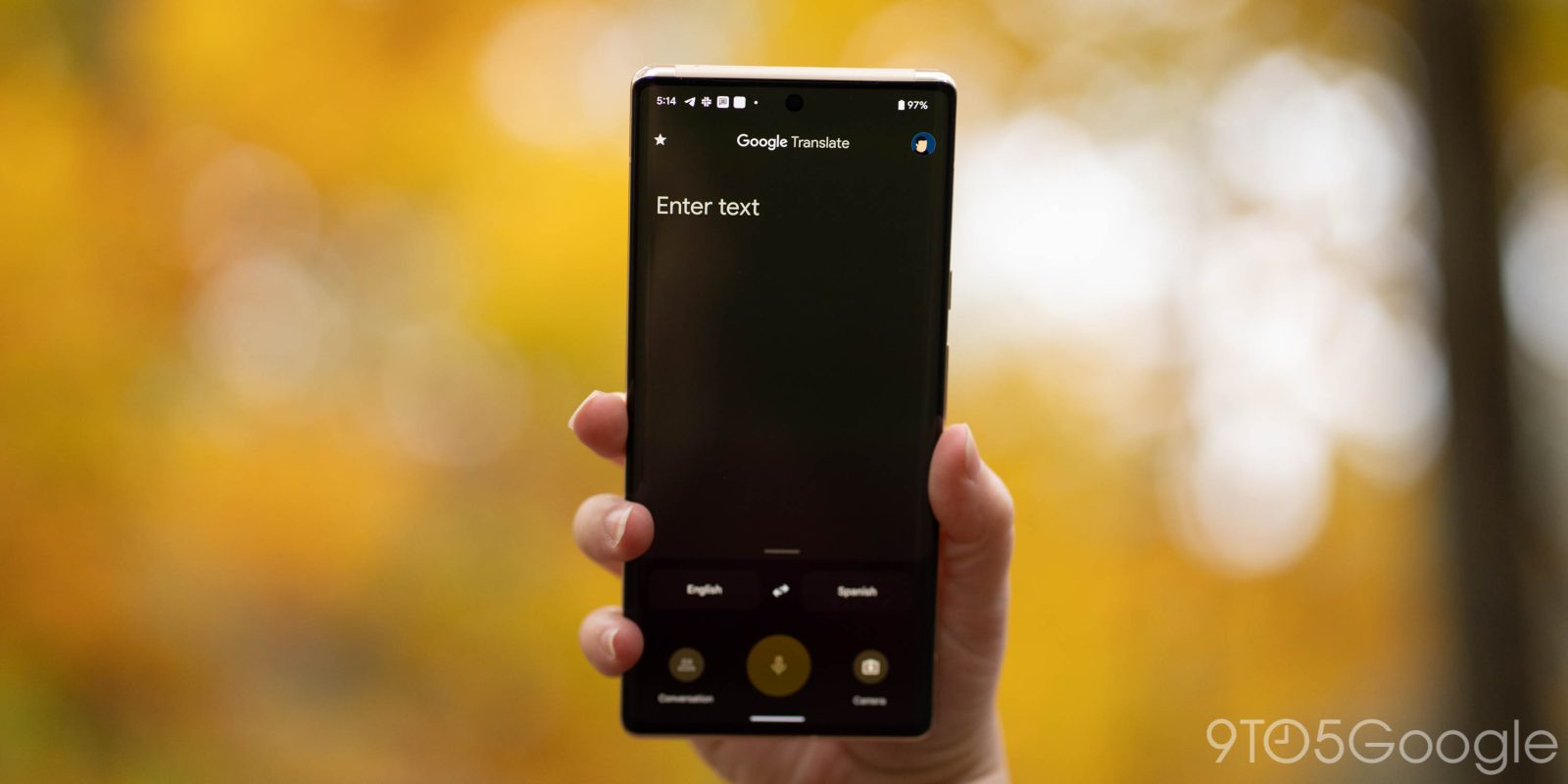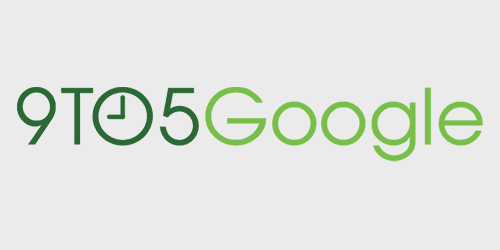Google Translate



While it’s not appearing for all users, Google appears to be testing its Translate tool directly in search results. Specific search results for translations such as “Hola in english” already presented users with the answer directly above search results, but now search queries like “translate” “translation” and “translate tool”— which most users search for when looking for translation services— present a redesigned translate tool (pictured above) where users can enter text and adjust languages right from the search results page.
It’s unclear if this is just a test or something Google plans to roll out more broadly, but it’s certainly something that other translation services might not be all too pleased with. The first search result below the new tool is most often “Google Translate”, as it was before the roll out of the new translate tool in search results.
Google told us it’s “always working on improvements to our products.”


Alas, we’re one step closer to an App Store not filled with iOS 6 keyboards. Google released Translate 2.1 today, bringing support for the iOS 7 keyboard released last September to the iPhone and iPad.
The update also expands support for its new handwriting input method to a number of additional languages including Arabic, Esperanto, Gujarati, Hebrew, Javanese, Maltese, Maori, Marathi, Persian, Punjabi, Telugu, and Zulu.
Google first introduced its handwriting input method last September. Google Translate 2.1 is available now on the App Store.
Expand
Expanding
Close

In a move that could have interesting implications for the future of its non-Latin audience, Google Translate has brought handwriting recognition – first introduced in its Android app – to the web. In a blog entry, the company says it is aimed at times when you don’t know how to type characters.
Handwriting input lets you translate a written expression, even if you don’t know how to type the characters. For example, suppose you see the Chinese expression “饺子” and want to know its meaning in English, but have no idea how to type these characters. Using the new handwriting input tool, you can simply draw these characters on your screen and instantly see the translation.
It’s a recognition that an increasing amount of web usage is via devices with touchscreen input, and opens up a lot of future possibilities, such as automatic conversion of handwritten notes into text simply by opening a tab in your browser.
There are plenty of handwriting recognition apps out there already, and the feature is built into some devices like the Samsung Galaxy Tab and Galaxy Note tablets, but the ability for any webpage to recognise handwritten input, signatures and perhaps drawings could make life a lot more convenient for those who, unlike me, write faster than they type.

Google has updated its Android Translate app with a new Phrasebook feature to store some translated phrases that users want to keep quickly accessible. Phrasebook can easily sync via your Google Account’s login credentials.
When you’re traveling in another country, you want quick access to your favorite translated phrases—whether it’s “Where can I find a museum?” or “Do you know where the bathroom is?” Google Translate lets you save these translations in your Phrasebook, but you still could not easily access them on the go from your phone or tablet. Starting today, you can automatically sync the phrases in your Phrasebook to your Android device using the Google Translate mobile app, so you can carry your most useful phrases with you wherever you go.
Additionally, Google has added support for 16 new languages for camera-input translations.
Last but not least, this latest release of Google Translate for Android sees a significant improvement to the camera-input feature. You can now use camera-input to find translations in 16 additional languages: Bulgarian, Catalan, Danish, Estonian, Finnish, Croatian, Hungarian, Indonesian, Icelandic, Lithuanian, Latvian, Norwegian, Romanian, Slovak, Slovenian, and Swedish.


Google announced on its blog today that it is adding support for 5 new languages in Google Translate that combined are spoken by over 183 million people worldwide. The new languages, which include Bosnian, Cebuano, Hmong, Javanese, and Marathi bring Google Translate up to a total of more than 70 languages.
The five new languages are still in alpha (apart from Bosnian) but Google promised to “to test and improve them over time.”
-Bosnian is an official language in Bosnia and Herzegovina that’s also spoken in regions of neighboring countries and by diaspora communities around the world.
-Cebuano is one of the languages spoken in the Philippines, predominantly in the middle (Visayas) and southern (Mindanao) regions of the nation.
You can hear the Hmong language spoken in many countries across the world, including China, Vietnam, Laos, Thailand and throughout the United States.
-Javanese is the second most-spoken language in Indonesia (behind Indonesian), with 83 million native speakers.
-Marathi is spoken in India and has 73 million native speakers. Google Translate already supports several other Indian languages: Bengali, Gujarati, Hindi, Kannada, Tamil, Telugu and Urdu.


There were hints late last month that Google was planning on adding new features to Google Translate and today the company announced a new feature for the service called Phrasebook. Rather than having to translate the same words and phrases time and time again, Phrasebook allows users to save a set of translations for quick and easy access. Google explained how the features works:
It’s easy to start using Phrasebook. Simply click the star under the translated text to save the translation in your Phrasebook. To view your Phrasebook, simply click the Phrasebook icon above the upper-right corner of the box containing the translation.
Click any phrase in your Phrasebook to load it back in the translation area. Using the Phrasebook controls, you can filter your phrases by language pair or search for a specific phrase. You can also easily listen to each phrase by hovering over the entry and selecting the text-to-speech icons.
Google could soon be adding more features to Translate as last month hints were discovered that Google is working on an option to select a dialect for certain languages in its text-to-speech feature within Google Translate. There were also additional dictionary features that have yet to be implemented.


As noted by the unofficial Google Operating System blog, Google could soon add the option to select a dialect for certain languages in its text-to-speech feature within Google Translate. The option is currently hidden in Translate’s source code, according to the report, and it would allow users to hear various dialects like American, British, and Australian for English.
The text-to-speech feature will allow you to select the dialect for languages like English, Spanish, Portuguese and Chinese. It’s nice to compare American English, British English and Australian English.
The report also noted hints of other features that aren’t currently available, including phrasebook and dictionary features.


Google is updating its Google Translate service with a few new features today. Among the new features is grouped clusters of synonyms for easier viewing, and frequency indicators that mark translations as “common, uncommon, or rare”. Google also explained a new “reverse translations” feature:
Our users often tell us that they check our translations by translating them back into their original language. Reverse translations can distinguish translations of different meanings and reveal subtle differences among similar words. Each translation is now annotated with its most frequent reverse translations.
The new grouped synonyms will initially only be available when translating into English, but Google said more languages will be added soon. Google also described how the frequency indicators will work:
Expand
Expanding
Close


On the Google Enterprise blog today, General Manager of Enterprise Search Matthew Eichner introduced the latest version of the yellow “Google in a box” search solution for enterprises. GSA 7.0 brings new features nearly 10 years after first introducing the appliance, including: Google-quality search for SharePoint 2010, better smartphone and tablet integration, and refined speed and relevance with assisted navigation and Entity Recognition:
The GSA 7.0 helps you find information stored anywhere in your organization, whether you’re using a desktop, smartphone or tablet. Administrators can easily add content sources from secure storage, cloud services or the public web and social networking sites. GSA 7.0 also provides Google-quality search for SharePoint 2010, making for a more simple and intuitive, all-in-one search experience.
Google described of the other new features in GSA 7.0 including document preview, Google translate, support for more languages, and an improved UI:
Expand
Expanding
Close

Sony’s rumored flagship smartphone, codenamed “LT29i Hayabusa,” is allegedly eyeing a summer launch, but a Chinese blog just unearthed a few purported pictures of the device (above) coupled with a bevy of specs.
The Hayabusa reportedly boasts a 4.55-inch HD reality display in 720p, a Snapdragon S4 processor, rear-illuminated 13-megapixel camera, HDR video recording (sample video below), a 2200mAh battery, Android 4.0, and a slew of connectivity features. Oh, and it is supposedly 7 mm thick.
[youtube=http://youtu.be/fM2xYCcbV5U]
(via Baidu [Google Translate] and Brief Mobile)

The iPhone is great in many ways, but perhaps one of the best cases is in a medical emergency. KVAL reported a 57-year-old Oregon man was suffering from a diabetic reaction while driving down a local highway. (Video link here.)
When two medical responders came to the scene and tried to assist the man, they ran into quite a language barrier. The man only spoke Chinese, but luckily, one of the responders knew to reach for his iPhone. He fired up Google Translate and was able to speak Chinese with the man to figure out his condition and give him the help he needed.
Cross posted on 9to5Mac.


Two nice-to-haves discovered earlier this week over at the Google Operating System blog. The first deals with using templates in Google Contacts. You can choose between two templates by hitting the More Actions button when creating a new contact: Standard and Business. The latter has added custom fields such as job title, company name, mobile phone and work phone. Hopefully, Google will allow us to edit and create our own templates in the future.
The other feature available in the Google Translate service seeks to tap the crowd-sourced knowledge in order to improve the quality of translations. From now on, you can mark each individual translation as Helpful, Not helpful and Offensive by clicking the Rate Translation button. Also, you can click on the translated word and up pops a menu with alternate translations that you can re-order by holding down the Shift key and drag the words around.
